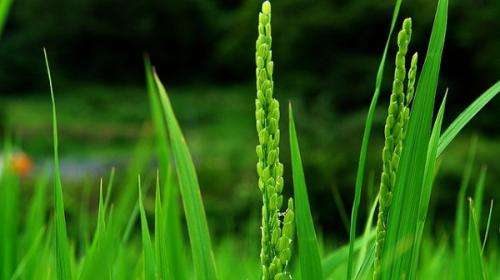Rice response to phosphate levels measured

A better understanding of how genes in plants respond to phosphate starvation could help to improve crop yields.
A University of WA and La Trobe University study has used novel sequencing technologies to assess the response of all genes in the rice (Oryza sativa) genome after phosphate starvation and recovery.
Study author Dr David Secco says phosphorus is often present in non-limiting concentrations in the soil but the availability of phosphate—the main source of phosphorus used by plants—is often hindered due to its low solubility in soil and high sorption capacity.
"As a consequence, phosphate is immobile and unavailable for plant uptake because of adsorption, precipitation or conversion to the organic form," he says.
"It can also be washed away by prolonged soil weathering.
"Phosphate starvation is of main concern in Australia, and south-western Australia in particular, where the soils are severely nutrient-impoverished.
"For the majority of plants, phosphate starvation is associated with reduced growth, and thus reduced yields for crops, making it a key limiting factor for farmers."
The study aimed to discover new information about complex and dynamic mechanisms involved in phosphate homeostasis.
Crop response examined in stages
As part of the comprehensive time course experiment, the researchers profiled rice roots and shoots in early stages (one hour after phosphate removal to a few days) and long-term (up to three weeks of phosphate starvation).
This enabled them to understand the kinetics (what gene is important when) of the response to phosphate starvation in a tissue-specific manner.
"Understanding how plants react when they are resupplied with nutrients such as phosphate is a critical step in trying to improve crop production in challenging environments," Dr Secco says.
"So far, most of the studies have focussed on the effects of phosphate starvation, greatly improving our knowledge of this mechanism.
"But much less is known about when plants are resupplied with phosphate, which is a situation comparable to plants grown in a field and then fertilised.
"Our study was unique because it measured the response of rice to phosphate re-supply within really short timeframes, such as one hour, six hours and 24 hours, which enabled us to capture the early mechanism involved."
Dr Secco says the research has identified a large number of genes responding to phosphate starvation and/or resupply.
"The next step is to now understand the function of these genes in response to phosphate starvation and learn how we can modify them to create plants with improved phosphate use and acquisition," he says.
Provided by Science Network WA


















